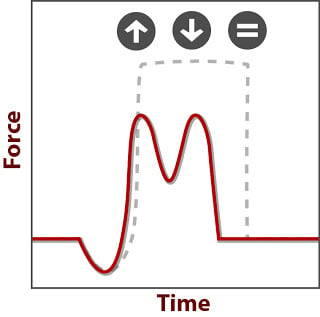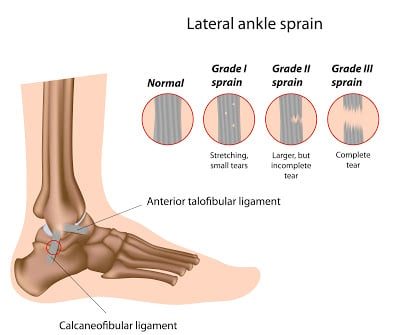
Of all reported injuries, one stands out as the most common. Ankle sprains range from 15-30% of all sports injuries, these issues can take up to 8-12 weeks to heal. More alarming is the high likelihood that this setback will reoccur again and again.
The most common prescription for an ankle sprain is RICE (rest, ice, compression, and elevation). However, RICE could actually prolong the healing process. The good news about ankle sprains is that this injury is preventable, very preventable.

The word “sprain” refers to the complete or partial tearing of the ligaments in the ankle. The most immediate symptom is swelling, which is just a sign that torn blood vessels are leaking fluid. Fortunately, this process allows white blood cells into the area, causing inflammation and the start of the healing process.
The main injury mechanism is a twisting or rolling over on the ankle, usually occurring during a cutting maneuver or landing from a jump, often on top of another player. But the real cause for these injuries start well before this incident.
The primary cause for ANY injury, including ankle sprains, is a previous injury in the same area. In this case, ligaments have been previously stretched, and then the athlete is subject to stress before these structures have time to heal (i.e. shorten).
This primary cause for re-injury, excessive flexibility can also be the major cause if no previous history exists. Such laxity is why a January 2013 study found females to be 1.25x more likely to sprain ankles. They are just more flexible, more mobile, which is the opposite of stability.
Such a mobility-stability imbalance explains why the majority of females test low on stability, or the EXPLODE portion of a Movement Signature. This need is objectively evident on our force plate, shown to the right by the large dip between the first and second peak.
We have been clear on ankle injury causes, excessive mobility allows too much twisting, an inability to control the lateral plane.
As usual, the approach to an injured ankle requires a combination of strength, skills, and regeneration.
Strength – Keep with the 1 leg deadlift normally used to improve that EXPLODE portion of your Movement Signature. This movement specifically targets your ability to control twisting.
Skills - Until you get back into dynamic movements like jumping and sprinting, include some ankle mobilizations. This intervention keeps range of motion front to back, again preventing the twisting motion.
Regen - We have to be careful here because mobility is not necessarily helpful, as it could compound the natural or required laxity causing an ankle sprain. We know the sprains occur from twisting or rolling over, and the muscles that counteract this motion are the peroneals the outside of the lower leg. If these muscles are slow to react, re-injury will reoccur, so reducing trigger points can improve the muscle spindle functioning and ability to respond quickly.
Prevention and rehabilitation are a lot closer than we recognize. In the case of ankle injuries, the lack of EXPLODE , or stability, on the Movement Signature unites us all.
Swenson DM, Collins CL, Fields SK, Comstock RD. Epidemiology of US High School Sports-Related Ligamentous Ankle Injuries, 2005/06-2010/11. Clin J Sport Med. 2013 Jan 16.